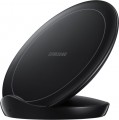Power (with 1 device)
The maximum power that the charger is capable of delivering to one rechargeable gadget (for models with 1 connector or with 1 wireless platform — the actual charging power). We emphasize that for wireless devices, it is the power in the wireless format that is indicated here (even if the design has a USB port with a higher power). Wired chargers usually list the USB power with the highest charging current or with support of the most powerful fast charging technology.
The smallest value of this metric nowadays is actually
5 W. Other popular options include
10W,
12W,
15W, and the most powerful models have
18W or more
to charge laptops(up to
100W).
Higher output power allows you to speed up the charging process; and in the case of wireless devices, a value of more than 10 watts already allows us to talk about the presence of fast charging. At the same time, a number of nuances are associated with this parameter. Firstly, not only the charger, but also the gadget being charged should support the appropriate power — otherwise the speed of the process will be limited by the specs of the gadget. Secondly, in order to use the full capabilities of the charger, it may be necessary to support not only the appropriate charging power, but also a
...certain fast charging technology (see "Fast charging"). Thirdly, in a charger with several charging connectors, the maximum power per device can only be achieved if the other ports are not used.Charger connection port
Port used to connect the power cable to the charger. This parameter is indicated mainly for wireless models, including car models (see "Type"), but it can also be relevant for other varieties — in particular, individual docking stations.
In general, when choosing, this parameter does not play a decisive role: a power adapter with the appropriate plug must be supplied in the kit. However, information about the power plug can be useful when looking for a spare or replacement power source. The options here might be:
— USB-C. One of the miniature varieties of the USB connector; microUSB differs from similar in many respects primarily in its two-sided design (which allows you to connect the plug to either side), as well as in smaller sizes. Is a universal standard; in fact, this means that, if necessary, you can also power the charger from a “non-native” adapter with a USB-C cable – the main thing is that this adapter can provide enough power.
— microUSB. Another smaller version of the USB connector, earlier than the USB-C described above. It is considered less perfect, and therefore noticeably less often used as a power connector for wireless charger; one of the key differences is the one-way connector design, which is less convenient to connect. MicroUSB is also a common standard and allows the use of third-party power supplies.
— Lightning. Proprietary 8-pin connector used in Apple technology. However, among the chargers there are...also third-party devices with such a power connector. The meaning of this design is that, if necessary, the charger can be powered through a proprietary Apple cable, and the Apple device can be charged wirelessly.
— Original. This category includes all connectors that are not related to those described above. These can be both proprietary interfaces of a particular company, or common, but at the same time rare standards. One of the most popular types of such a plug is cylindrical, similar to the DC power connector (although not necessarily identical in size and design). However, anyway, this connection method does not allow the use of third-party power adapters, and therefore is not particularly popular.
Cable length
The length of the cable supplied with or included with the charger. For wireless models, the length of the power cable of the charger itself is indicated here, for wired models, the length of the cord for charging gadgets
Anyway, a longer cable gives more freedom of movement, but it creates inconvenience for short distances. Also note that charging is supposed to be used in the immediate vicinity of sockets, so wires longer than 2 m are practically not found among such devices. A length of
more than 1.5 m is considered significant, from 1 to 1.5 m — medium, from 0.5 to 1 m — small, and in some models there are wires shorter than 0.5 m.
Power adapter
Whether or not
a power adapter is included with the charger.
This feature is relevant primarily for wireless models, including the ones for cars(see "Type"). Such devices usually consist of three parts: the charger itself with a platform/stand/latch, a charger power cable and an adapter for connecting the wire to a power outlet or cigarette lighter. If the presence of an adapter is initially indicated in the specifications, then the charger is supplied in a complete set; it is these models that you should pay attention to if you want to use the device right out of the box, without the hassle of finding additional accessories.
Also, this feature can be indicated for individual car chargers of the traditional, wired type. This usually means that the device is similar in layout to wireless models: main unit, power cord and cigarette lighter adapter. This design allows you to use the charger at some distance from the dashboard of the car — for example, take it to the back seat, giving passengers the opportunity to charge their phones. In this case, the adapter can have its own charging outputs (usually USB) and can be used separately from the main unit.

